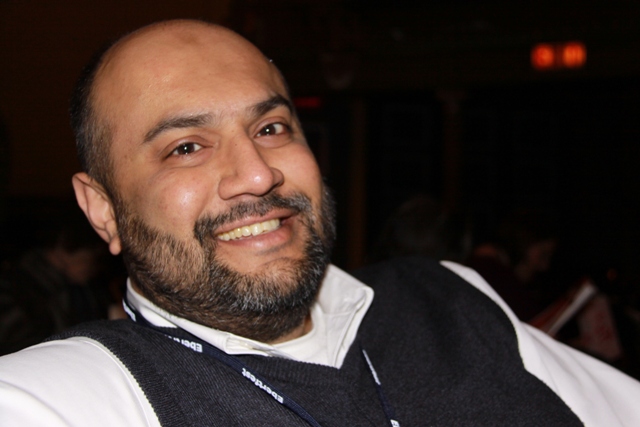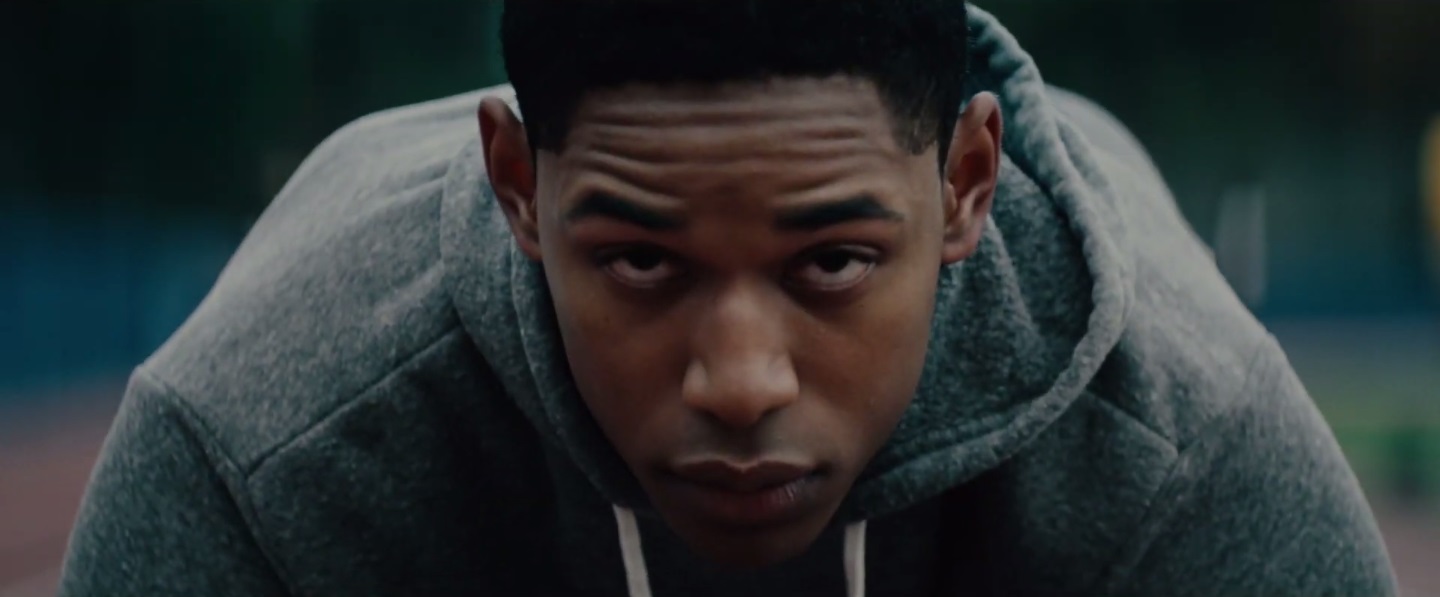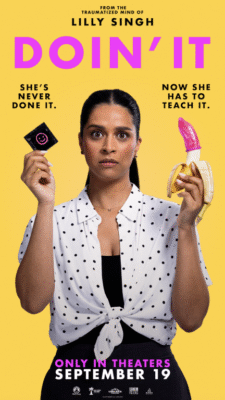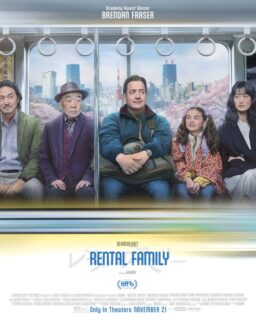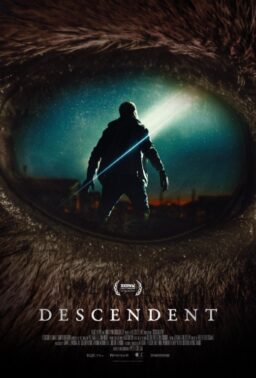Julius Onah’s “Luce” focuses on a teenager (Kelvin Harrison Jr.) at an uppity Northern Virginia high school whose trillion-dollar Barack-Obama-smile provides the sugarcoating ornamenting his stellar grades and numerous athletic trophies, until he earns the skepticism of his teacher, Ms. Harriet Wilson (Octavia Spencer). Actually, that is what you would expect. Rather, it is the story of a liberal couple (Naomi Watts and Tim Roth), the adoptive parents who imported him from Eritrea. When Ms. Wilson approaches them, their parenting reveals itself as fleeting loyalty rather than unstoppable non-rational and irrational love.
Ms. Wilson assigns her students to write a paper, spoken in the voice of a historical figure. Luce Edgar, her star student, writes as Franz Fanon advocating violent revolution against colonizers. Troubled by the call to violence, she inspects his locker, finding illegal fireworks. She calls in his adoptive mother, who tells her husband, and they struggle to figure out how to address it.
The film is a mystery. It is multiple whodunits–from the source of fireworks to the vandalism of a teacher’s home–each seeking answers in one person, the film’s namesake. It is a mystery for the parents trying to figure out how to parent.
Is Luce Edgar the fulfillment of the American Promise, making his humble best from every opportunity, at the beginning of a successful career in whatever he pursues, or is he the calculating opportunist whose friends are chess pieces in a game he is playing against everyone?
Are these two Americas the same?
At one level, the film is about the conflict between our ideals and our realities. The Edgars choose charity for their parenting options, adopting a child born in war. As their friends procreate, they question their choice, thinking their friends would not face similar challenges when their babies become teens. Ms. Wilson lives to nurture her students through her ideals about American life, especially regarding African-American students. When you see the world through ideals, there is no complexity: you are either a hero or a villain. Either you are someone of promise (Luce) or a statistic-in-the-making (DeShaun).
Is the film suggesting that the American vision, the Hollywood-esque dream, that our nation lifts its golden lamp in welcoming everyone so they can make a suburban life with a small palace and large lawn, actually an invitation to gangsters, rather, hustlers, rather, snake oil salesmen to loot what they can from the tired masses? In that way, is this film something in the universe of mobster films, in which Michael Corleone tells a politician, “Senator, we’re both part of the same hypocrisy” or more recently, “Hustlers” in which Jennifer Lopez proclaims at the end about America, “It’s all a Strip Club. You have people tossing the money and people doing the dance”? I find it strange or telling, that in comparison with the cinema of other countries, so many of our films—including children’s movies, including science fiction and fantasy—are crime stories.
Like a good mystery, the film’s brilliance is in controlling our uncertainty. So many films have us cheering for or sympathizing with villains. In this film, Ms. Wilson is the villain if Luce is the victim. Or is Luce toying with her idealism, leading her on a chase for her tail? Or, are the Edgars the villains for trying to take a wolf—unable to pronounce his name so they gave him a simple one deep with wonderful meanings—from his home and hire therapists to morph him into an innocuous suburban kid? That wolf was once an anonymous young boy learning to survive in a war zone – perhaps the world is the villain victimizing each of us.
Why do humanizing films keep dehumanizing?
This film falls into the same perplexing predicament that so many such mazes fall into: to tell its story about humanity, it chooses to dehumanize. We see the same problem in so many other films. The Wachowskis’ “Cloud Atlas” (2012) is a thing of beauty about the way love can grow between two disparate people, resisting the strictures of flesh or time. Yet, as my colleague Jana Monji points out, it resorts to the usual stereotypes about East Asian bodies in telling its story. On that note, the enormously entertaining “Crazy Rich Asians” is a milestone in East Asian representation, yet Jon M. Chu’s film made me laugh out loud when the South Asians appeared: voiceless intimidating security guards in red turbans. During Ben Affleck’s Academy Award winning “Argo” (2012), my jaw dropped for half the film: it purports to be sympathetic to the people of Iran, while depicting them as explosive swarthy zombies desiring nothing more than American blood and, of course, freedom. Eran Kolirin’s “The Band’s Visit” (2007) features Israeli Jews and Arabs discovering each other’s humanity, in a film that has no Palestinians. Or, Alan Parker’s “Mississippi Burning” (1988) explores a moment in the Civil Rights struggle, while limiting African Americans to glorified set dressing, lacking agency, substance, or dimension.
“Luce” succeeded in grabbing my attention … until the appearance of Rosemary Wilson (Marsha Stephanie Blake). Then it proceeded as I feared it would: while asking its questions, it became a minstrel show. Rosemary Wilson is Harriet’s sister. Mentally ill, confined to a home, abandoned by the rest of the family. Those are the ingredients for a sympathetic character. Yet, why is it that African American characters are angry—like Harriet Wilson. Or variations on the sexualized welfare queen—like Rosemary Wilson, who strips off all of her clothes in front of a crowd of students, in a mental breakdown, humiliated in a way reminiscent of Isabella Rossellini in “Blue Velvet.” Or pot smokers—like DeShaun Meeks. Or magical—like Luce?
Perhaps, those stereotypes are the point. This film looks at first like a “White Savior” movie, yet the White couple at the center seem as concerned about saving themselves from their pet projects. Another example is Karan Johar’s Bollywood fantasy, “My Name is Khan” (2010) following a Muslim man’s trek across post 9/11 America, which repeats some common stereotypes across races to highlight their absurdities. If the stereotypes are intentional, then why is the East Asian female character typically submissive in each of the relationships we explore through her, with nothing else to offer?
So, is there something to this pattern: that when we try to humanize a population, exaggerating their humanity, we will inevitably reduce another population to bare clichés?
Why must we limit ourselves to single opinions?
I recall numerous times in which Roger Ebert would complain about the limitations not only of the “Thumbs Up / Thumbs Down” system but also the four-star system for evaluating movies. In our contemporary tweet-bite conversation we are not only required to have opinions on every issue, but those opinions must be simple—thumbs up or thumbs down—even though nearly every movie I have ever seen has inspired in me at least half a dozen opinions. It is not uncommon for me to have a dozen opinions on particular movie scenes, sequences, or performances.
Like it’s complex leading man, this is a film that can be hard to pin down. “Luce” is somehow a film that is at the same time deep and shallow, depending upon my feelings toward each scene. I do not expect it will give me the answers I seek, and I do not know if it is because it is so smart or not smart enough.
